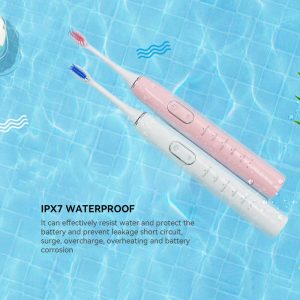In the world of modern electronic devices, performance and usability are essential for ensuring customer satisfaction. One issue that often goes unnoticed is the direct correlation between Button Responsiveness Declines and Battery Lifespan Inconsistency. Aging batteries or inconsistent output cause unresponsive buttons, impairing device functionality. In this blog, we explore how Battery Lifespan Inconsistency can affect button performance, investigate the underlying causes, and offer solutions to mitigate these issues for better product durability and user experience.
The Importance of Consistent Button Performance in Consumer Devices
In consumer electronics, button responsiveness is a critical factor in user experience. Buttons like power, volume, or mode switches must respond quickly and accurately to users. However, over time, many devices experience Button Responsiveness Declines, which can frustrate users and result in dissatisfaction. One key, often overlooked factor contributing to this issue is Battery Lifespan Inconsistency. Battery degradation or fluctuations cause voltage instability, affecting button responsiveness dependent on stable power.
How Battery Lifespan Inconsistency Affects Device Performance
Battery Lifespan Inconsistency refers to the gradual degradation of a battery’s ability to hold a charge and deliver a consistent voltage. As the battery ages or undergoes extensive charge cycles, its performance can fluctuate, leading to:
- Power Supply Fluctuations: Irregular voltage output may affect the functioning of electronic components, including buttons.
- Insufficient Energy Delivery: Inconsistent battery power fails to energize button circuits, causing delays/unresponsiveness.
- Battery Overheating: Poor battery health causes overheating, disrupting components like button tactile feedback.
As Battery Lifespan Inconsistency worsens, it reduces power delivery, compromising button responsiveness and degrading user experience reliability.
The Direct Link Between Button Responsiveness and Battery Power
The connection between Button Responsiveness Declines and Battery Lifespan Inconsistency is evident in how power flows through a device. Most modern devices use capacitive or resistive buttons that depend on stable power to detect user input. If the battery fails to provide consistent voltage or fluctuates between high and low output, the following issues may arise:
- Delayed Inputs: Buttons may require multiple presses or fail to register inputs immediately, causing frustration.
- Erratic Behavior: Buttons may behave unpredictably, leading to unintended functions or a complete failure to respond.
- Increased Latency: A weakening battery slows button input processing, lengthening the press-to-response delay.
Combined factors cause unreliable use and early failure in long-term devices.
Identifying the Root Causes of Button Responsiveness Declines
To prevent Button Responsiveness Declines tied to Battery Lifespan Inconsistency, manufacturers must focus on the root causes of these performance issues:
- Battery Quality and Design: Low-quality batteries or poor battery management systems (BMS) can contribute to inconsistencies in power delivery. Devices with subpar battery components are more likely to experience significant drops in performance over time.
- Improper Charging Cycles: Frequent overcharging or deep discharging of a battery can accelerate its wear and lead to power fluctuations.
- Environmental Stress: Extreme temperatures and humidity can accelerate battery degradation, leading to unstable power output and subsequent button malfunctions.
- Inadequate Power Regulation: Lacking voltage regulation circuits, fluctuating power causes erratic button behavior from unmanaged energy.
By understanding these factors, manufacturers can take steps to design more durable power systems and enhance overall device reliability.
Strategies for Mitigating the Impact of Battery Degradation
To address Button Responsiveness Declines caused by Battery Lifespan Inconsistency, manufacturers can implement several strategies:
- Use High-Quality Batteries: Ensure that devices use high-quality, long-lasting batteries with built-in protection mechanisms, such as overcharge prevention and thermal regulation, to maintain consistent voltage output.
- Optimize Power Management Systems: Design devices with efficient power regulation circuits to stabilize voltage and prevent fluctuations that affect button performance.
- Battery Monitoring Features: Implement battery health monitoring features that alert users when the battery is degrading or approaching the end of its useful life.
- Energy-Efficient Design: Develop devices that require less power to operate, thereby extending the battery life and reducing the risk of Battery Lifespan Inconsistency.
- User Education: Educate users on proper charging practices to extend battery life, such as avoiding overcharging or letting the battery fully discharge.
By integrating these strategies, manufacturers can mitigate the negative effects of battery degradation, ensuring that Button Responsiveness Declines do not become a long-term issue for consumers.
The Future of Battery and Button Technology
As battery technology continues to advance, the industry will see improvements in both power management and button responsiveness. Emerging technologies, such as:
- Solid-State Batteries: Offering more stable energy output and longer life cycles, these batteries promise to reduce inconsistencies and provide better overall performance.
- AI-Powered Power Management: Advanced algorithms that adapt the power output based on the device’s usage patterns will minimize the risk of power fluctuations and ensure smoother button interactions.
- Touchless or Voice-Controlled Buttons: In addition to physical buttons, manufacturers may explore alternative interfaces that reduce dependency on traditional buttons and power systems.
Leading manufacturers adopting evolving tech deliver stable, durable, and user-friendly products.
Conclusion
Button Responsiveness Declines tied to Battery Lifespan Inconsistency highlight a critical area of concern for manufacturers aiming to provide reliable, long-lasting devices. Addressing battery degradation, optimizing power management, and upgrading components boost product performance and satisfaction. Smarter power and battery systems reduce issues, ensuring long-term device performance through tech advances.
Interested in learning more about optimizing battery performance and button responsiveness in your products? Contact us today to explore tailored solutions that enhance both functionality and longevity.



